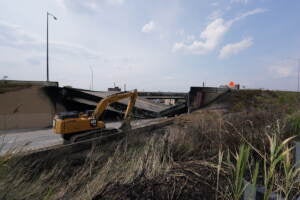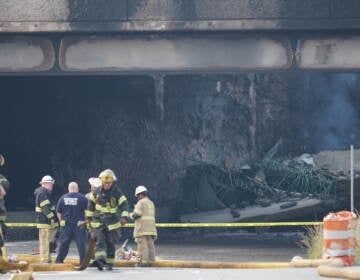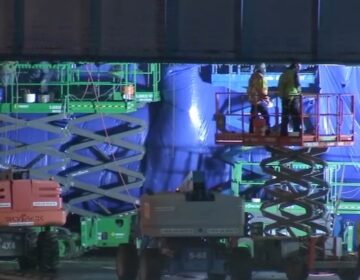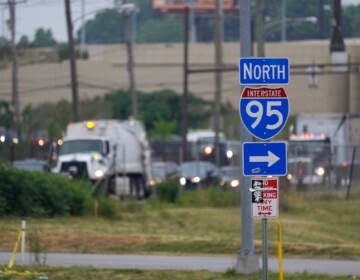Civil engineers weigh in on I-95 repair process in Philadelphia
Engineers say temporary fixes of I-95 or military bridges are not viable options.
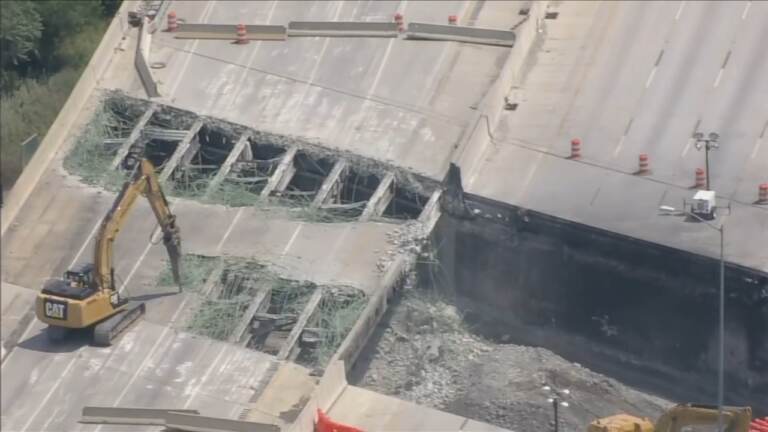
Engineers say temporary fixes of I-95 or military bridges are not viable options. (6abc)
This story originally appeared on 6abc.
PennDOT plans to announce a replacement plan Wednesday for the section of I-95 that burned down in Sunday’s fire.
Civil engineers say the timing and complexity of the project depend on the makeup of the bridge.
“Everything can be done faster for more money,” said Andrew Bechtel, the chair of department of civil engineering at The College of New Jersey.
On Tuesday, crews were demolishing the southbound side of the I-95 overpass over Cottman Avenue. While that side of the interstate didn’t collapse in the fire as the northbound side did, officials say it was damaged beyond repair.
Once that process is over, crews will be able to more fully assess the damage.
“This bridge over 95 is a simple overpass. You have concrete surface on top of metal deck,” explained Abi Aghayere, a professor of structural engineering at Drexel University.
As the fire burned Sunday, at 500 degrees, the concrete started to crack. At 1,000 degrees, those cracks expanded until the fire reached 2,500 degrees when the concrete melted.
Officials say that’s why demolition was necessary.
“You always wanna try to keep anything that you can salvage, but safety is our number one priority. And just from the distortion of the metal under there, the inspection pretty clearly determined you cannot put load back on top of that structure,” said Shailen Bhatt, administrator of the Federal Highway Administration.
The questions engineers have now are about the integrity of the bridge’s abutments — the structures that connect the bridge to the ground.
“They’re not going to know about those things until they get everything out of the way and get in there,” said Bechtel.
That will be telling to the timeline. When a piece of I-85 in Atlanta burned down in 2017, the abutments were not damaged and it took crews 44 days to fix the bridge.
“You can think of a bridge like a person. Each one is unique, designed differently, and has different conditions,” said Bechtel.
Engineers say with the volume this section of 95 experiences, temporary fixes, or military bridges are not viable options.
“The issue would be you couldn’t erect that and run traffic over it at 75 mph with the giant trucks,” said Bechtel.
Engineers told us one option is to rebuild the highway one side at time, that way some lanes could be open while construction is still going on.

Get daily updates from WHYY News!
WHYY is your source for fact-based, in-depth journalism and information. As a nonprofit organization, we rely on financial support from readers like you. Please give today.



